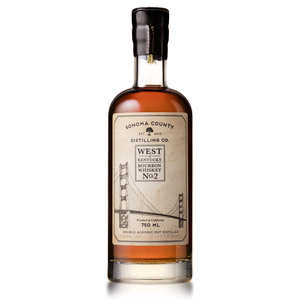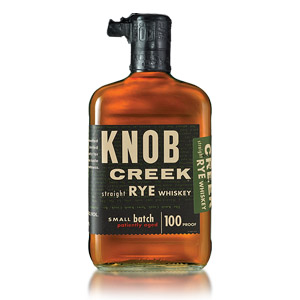I love the variety of American whiskey expressions that have graced the liquor store shelf in recent years. No longer is it just five or six old stalwarts and 1 or 2 fancy special editions, now you can get vintage-dated, age-stated, cask-finished expressions from a wide range of both sourced and distillery-owned brands. I love this, but I also hate trying to review them all. As soon as one new interesting whiskey pops up (say, George Dickel’s first bottled-in-bond release), I blink and now there are four! And, of course, the bottle I have in my cabinet ready to be reviewed is already three editions back. Gah.
For review, Dickel’s bottled-in-bond release is 50% ABV (of course) and distilled in one distilling season which is printed on the label. The whiskey is Tennessee whiskey, which means it’s essentially bourbon that’s been chill filtered through sugar maple charcoal. The website, although unclear, seems to indicate they all share the same mash bill as other whiskies from the distillery: 84% corn, 8% rye, 8% malted barley. For more background on Dickel’s whiskies, see my review of the 12 year. Here is the list of Bottled-in-Bond releases up to the date of this review:
- Fall 2005 – Aged 13 years
- Fall 2008 – Aged 11 years (this review)
- Spring 2007 – Aged 13 years
- Fall 2008 – Aged 13 years
A spoiler: The Fall 2005 edition was $35 and I called it a “Must Have”. The Fall 2008 edition (this one) cost $41 and comes with 2 fewer years of age on it and frankly just less wow-factor in the bottle. The Fall 2008 (13 year) edition on the shelf right now is a whopping $49. I think you can see where this is going, but it was fun while it lasted.
Nose: Robust and assertive – significant nose tickle but also significant aroma concentration. Nutty, with big nougat and crushed peanuts. Assorted sugars: brown sugar, caramel, circus peanuts. An array of spices including ground clove, cinnamon, and cracked white pepper. Lastly, there’s a twinge of something vegetal and unpleasant that I can’t put a finger on. Roasted green bell pepper? A rest in the glass makes the aroma even sweeter and adds vanilla bean.
Palate: Medium body. Strong tongue burn, a little hotter than expected at 50% ABV. When the burn clears, there is a nice array of sweet treats (peanut butter toffee, candy apples, cinnamon salt water taffy), some slight mouth-drying barrel tannins, and a touch of charcoal bitterness.
Finish: Medium-long. Dry, with most of those sweet notes replaced by dry spices, oaky tannin, and mildly bitter charcoal. Evolves into a bit of marshmallow which is a nice way to finish.
With Water: Several drops of water increase the nose tickle without adding any notes. The body seems thinner, the flavors more muddled and less distinct. The finish has added grassiness. I don’t think this needs water.
Overall: Good, but not as good as the first edition. I appreciate the concentration of aromas and flavors, the wide array of different elements, and the balance of sweet notes to dry oaky notes. However, it is missing fruity notes that were apparent in No.1, and the whiskey is 2 years younger and 20% more expensive. This rubs the wrong way.
If you’re hoping for a repeat of batch No. 1 you’ll be disappointed. However, if you’re looking for a tasty 100-proof bourbon with an actual age statement, this isn’t a bad choice. Note that I can’t (yet) speak for the Fall 2008 (13 year) on the shelf right now. It’s possible the extra two years fixed my complaints, but at $49 they certainly are making us pay for the remedy.









I haven’t had any TN whiskies in many years, the last one being JD7 probably 20 years ago. I may be very wrong here, but when I check the list of TN whiskies sold here in NC (a control state) there’s really no variety. Of the 35 or so offerings, 22 of them are JD. So it’s pretty clear that JD is essentially a monopoly in that state but allows Dickel, Ole Smoky & Uncle Nearest to linger around to give off the false appearance of competition.
Because of this, I’ve been considering trying Dickel for a while. I’m becoming a big fan of bottled in bond, due to the assurance of quality. I do wish distillers would get off the chill filtration teat, it’s become a crutch and it’s long been an open secret the only reason for its existence is sheer cosmetic appearance. Sure, chill-filtration coupled with sugar-maple charcoal “mellows”, but that’s code for stripping and homogenizing flavor. But moonshiners back in the day did that because they deliberately ran far into the harsher tails in order to make more palatable product. Can’t blame a backwoods shiner for making more money, but this isn’t something a corporation with unimaginable resources should be doing.
Believe it or not, some people don’t want smooth whiskies.
Well said, thanks!